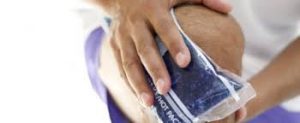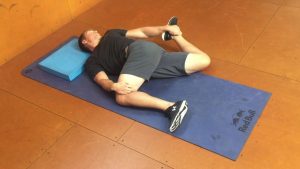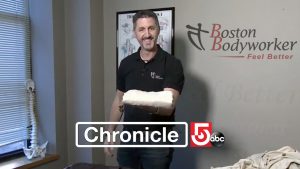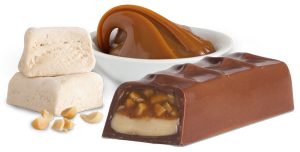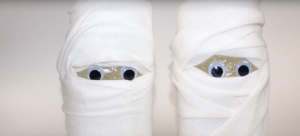Muscle Strains
A strain, sometimes referred to as a pulled muscle, is a muscle injury produced by excessive tensile stress that causes fibers to tear within the tissue. A muscle strain does not usually result from excess stretch alone, but from a combination of tension and contraction.
Muscle strains can develop when excess tension is placed on a muscle while it’s also in contraction. Due to muscle mechanics, strains are more likely while the muscle is in eccentric contraction than concentric or isometric.1,2
There are three grades of muscle strain: first degree or mild, second degree or moderate, and third degree or severe. In a first-degree strain, few muscle fibers are torn. While there might be some post-injury soreness, the individual usually returns to normal levels of activity quickly. With second-degree strains, more fibers are involved in the injury. There is a greater level of pain with this injury and a clear region of maximum tenderness in the muscle tissue.
A complete rupture of the muscle-tendon unit occurs with a grade-three strain. Some strains are classified as third degree even though the muscle still has some fibers intact because the damage is extensive. There is likely significant pain at the time of the injury. Pain can be minimal afterwards, because the ends of the muscle are separated and limb movement does not cause additional tensile stress.
Third-degree strains generally require surgical repair. In some instances, surgery is not performed because the muscle does not play a crucial role and the potential dangers of surgery outweigh the benefits. Ruptures to the rectus femoris are an example because the other three quadriceps muscles make up for the strength deficit caused by the strain.
The muscles most susceptible to strain injuries are multi-articulate muscles, which are those that cross more than one joint. The more joints crossed by a muscle, the greater is their vulnerability for strain injury. All involved joints cannot achieve full range of motion at the same time due to limited extensibility of the muscle tendon unit. If the muscle is stretched across multiple joints at the same time, it’s more susceptible to tearing from excess tensile stress.
Strains can develop in any part of the muscle, but usually occur at the musculotendinous junction.3 The junction of muscle and tendon places one tissue with higher pliability (muscle) directly adjacent to another with limited pliability and more tensile strength (tendon). As a consequence, the point of interface between the two tissues becomes a site of mechanical weakness where the strain occurs.
Muscle strains generally arise from acute injuries. However, there might be repetitive tensile forces on the muscle that cause small degrees of fiber tearing, producing a chronic strain. In most cases, the client can recall a specific movement or accident that produced the strain. Swelling might occur in the area immediately after the injury, but is likely to subside after the initial inflammatory phase (an estimated 72 hours).
Strains, both acute and chronic, are increasingly common where they have previously occurred. Scar tissue that repaired the original strain is a weak point in the muscle’s continuity, and therefore a location vulnerable to re-injury. It’s important to find out whether the client has suffered a previous injury to the area.
Following a strain, resting from offending activities for several weeks provides the body time to heal damaged tissue. Another primary goal of treatment is tension reduction in the affected muscle. Tension is reduced with massage techniques such as effleurage, stripping, broad cross-fiber sweeping, etc. In addition, it’s important to help develop a functional scar at the site of tearing and prevent scar tissue from adversely binding adjacent fibers. Deep transverse friction massage is used to develop a healthy, functional scar. Muscle strains are a common soft-tissue injury and massage is an excellent treatment option to help in the management of these conditions.
References
- Faulkner JA, Brooks SV, Opiteck JA. Injury to skeletal muscle fibers during contractions: conditions of occurrence and prevention. Phys Ther. 1993;73(12):911-921.
- Hoskins W, Pollard H. The management of hamstring injury-Part 1: Issues in diagnosis. Man Ther. May 2005;10(2):96-107.
- Garrett WE, Jr., Safran MR, Seaber AV, Glisson RR, Ribbeck BM. Biomechanical comparison of stimulated and nonstimulated skeletal muscle pulled to failure. Am J Sports Med. 1987;15(5):448-454.
Ready to #feelbetter?
You're just a click away from a wicked good massage!
-

60 Minute Massage Gift Card
$170.00 Add to cart -

90 Minute Massage Gift Card
$255.00 Add to cart -

Mini Aer Small Room Air Purifier
$149.00 Add to cart -
Sale!

Thera-Pearl Sports Pack/Hot Cold
Original price was: $14.99.$12.99Current price is: $12.99. Add to cart -

3 Somadome Sessions Gift Card
$135.00 Add to cart -
Sale!

TheraBand® Stretch Strap
Original price was: $19.99.$14.99Current price is: $14.99. Add to cart -

20 Minute Somadome Gift Card
$45.00 Add to cart -

TheraBand CLX Connective Loop
$14.99 Select options
Please Hold the R.I.C.E.
Please Hold the R.I.C.E. I have been in the rehabilitation field since 1992. Since the very beginning I was always told that when treating an acute injury you should follow the age old acronym of R.I.C.E. or Rest, Ice, Compression and Elevation. The concept was originally introduced by one of the most respected names in…
Read MoreHave a Brettzel!
Have a Brettzel! In the world of flexibility and stretching, there are a bevy of stretches that have likely been shown to you over the years. It’s hard to remember them if you don’t consistently do them and the ones you likely DO recall are the ones that are probably easiest for YOU to perform.…
Read MoreTake 5: A Stress Break
Take 5: A Stress Break I will be the first in line to inform you of the benefits of a 60 minute massage treatment. However, what if your massage is not scheduled for another week or worse, not even scheduled? Well, as a firm believer and trumpeter of self-care, here is a pretty neat trick…
Read MoreIs it a Muscle Cramp or Muscle Strain?
Is it a Muscle Cramp or Muscle Strain? Last week when my daughter walked in from cheerleading practice, I noticed her limping. When I asked her why she was limping, she went on to explain what I often hear and have seen from my athletes. Having been fortunate to evade serious injuries until this point…
Read MoreWork From Home Hacks!
With so many of you experiencing a new work environment, you are probably starting to notice that many of the chronic aches and pains you had experienced in the past at work on a daily basis, have seemingly disappeared. In their place however, are a new set of sensations we are experiencing due to such…
Read MoreHow to Fold a Fitted Sheet
Have a ‘sheety’ Valentine’s Day! Today is Valentine’s Day, otherwise known to most as a #greetingcardholiday. As I walked out of CVS this morning, I laughed at the people who were fighting for position in the greeting card aisle. Valentine’s Day is about showing love for someone in your life, not elbowing strangers while cursing…
Read MoreHappiness is Contagious
Happiness is Contagious Maybe mom was right. Research suggests that surrounding yourself with friends and family who are happy can actually increase your own happiness. Scientists at Harvard University and the University of California, San Diego, found that emotions, particularly happiness, have a viral effect in how they spread from one person to another. For…
Read MoreDe-stressing the Commute
De-stressing the Commute Turning Road Rage into Road Sage The average American commuter spends an hour a day driving to and from work. During this stressful, stop-and-go time, it’s likely that blood pressure increases, adrenaline begins pumping, and muscles constrict and tighten. By the time you get home, you’re wiped out and grumpy, and you…
Read MoreWhat’s the Scoop on your Poop?
What’s the Scoop on your Poop? Being the father of two girls, I know I have my work cut out for me. I have come to accept that there are lessons that I can teach my children and there are others lessons they will simply have to learn through personal experience. One of the lessons…
Read MoreHalloween Hacked!
Halloween Hacked Check out these simple hacks! Who among us doesn’t love Halloween. If I am being honest, it used to be me! You see, I typically found myself in trouble around this time of year when I was in grammar school. Let’s just say that I wasn’t always motivated to do what was asked…
Read More
